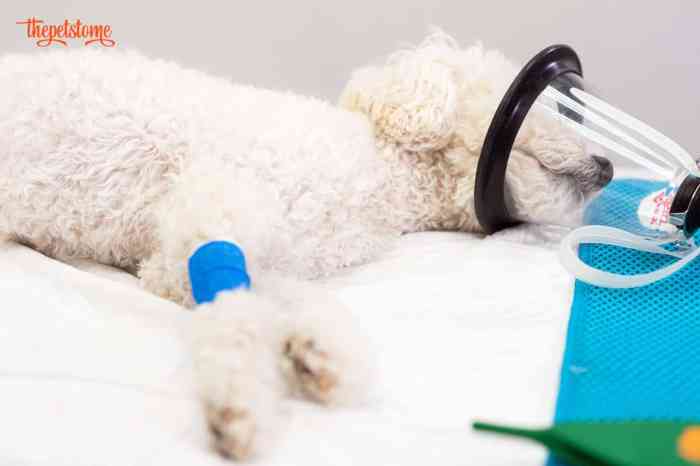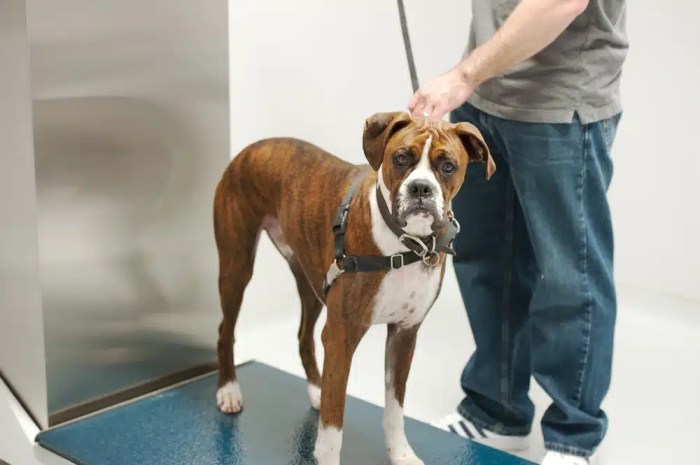Do they sedate dogs to remove staples? This question stirs curiosity among pet owners faced with the prospect of removing staples from their furry companions. Understanding the rationale behind sedation and its implications is crucial for informed decision-making. This article delves into the intricacies of sedation for staple removal in dogs, exploring its benefits, risks, and alternatives.
Sedation, a controlled state of reduced consciousness, plays a significant role in veterinary medicine, enabling various procedures to be performed safely and comfortably. In the context of staple removal, sedation offers advantages such as minimizing pain, reducing anxiety, and ensuring the dog’s cooperation during the procedure.
Introduction

Sedation is often used during the staple removal procedure for dogs to minimize discomfort and anxiety. This article will discuss the benefits and risks associated with sedation, as well as the different types of sedation available and how they are administered.
We will also provide information on the recovery process for dogs after sedation and alternatives to sedation for dogs undergoing staple removal.
Types of Sedation
There are three main types of sedation that can be used for dogs undergoing staple removal: local anesthesia, regional anesthesia, and general anesthesia.
- Local anesthesianumbs a small area of the skin, making it ideal for removing staples from small areas.
- Regional anesthesianumbs a larger area of the body, such as a limb or the entire head and neck. This type of sedation is often used for removing staples from larger areas or for procedures that may cause more discomfort.
- General anesthesiarenders the dog unconscious, making it the most effective option for procedures that may cause significant discomfort or pain. However, general anesthesia also carries the highest risk of complications.
Administration of Sedation: Do They Sedate Dogs To Remove Staples

The type of sedation that is used will depend on the size of the dog, the location of the staples, and the dog’s overall health. Sedation is typically administered by a veterinarian or veterinary technician. The dog will be given a sedative medication, either orally or intravenously, and the effects of the medication will typically take effect within 15-30 minutes.
It is important to monitor the dog’s vital signs during sedation, such as heart rate, respiratory rate, and temperature. The dog should be kept warm and comfortable during the procedure.
Recovery from Sedation
The recovery process for dogs after sedation will vary depending on the type of sedation that was used. Dogs that have been given local anesthesia will typically recover quickly and can usually go home the same day. Dogs that have been given regional anesthesia may need to stay in the hospital for a few hours until the effects of the medication wear off.
Dogs that have been given general anesthesia will typically need to stay in the hospital overnight for observation.
It is important to follow the veterinarian’s instructions for caring for your dog after sedation. This may include providing a quiet place for your dog to rest, offering small amounts of food and water, and monitoring your dog for any signs of complications.
Alternatives to Sedation

In some cases, it may be possible to remove staples from dogs without using sedation. This is typically only possible for small dogs or dogs that are very cooperative. There are a few different methods that can be used to remove staples without sedation, including using a staple remover, using a pair of pliers, or using a pair of scissors.
It is important to note that removing staples without sedation can be more difficult and may cause more discomfort for the dog. If you are considering removing staples from your dog without sedation, it is important to talk to your veterinarian first.
Query Resolution
Is sedation always necessary for staple removal in dogs?
No, sedation is not always required. For simple staple removals in cooperative dogs, local anesthesia may suffice.
What are the risks associated with sedation in dogs?
Potential risks include respiratory depression, cardiovascular complications, and allergic reactions. However, these risks are generally low when sedation is administered by a qualified veterinarian.
Are there any alternatives to sedation for staple removal?
Yes, alternatives such as topical anesthetics, oral sedatives, and physical restraint may be considered depending on the dog’s temperament and the procedure’s complexity.
